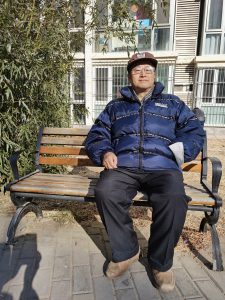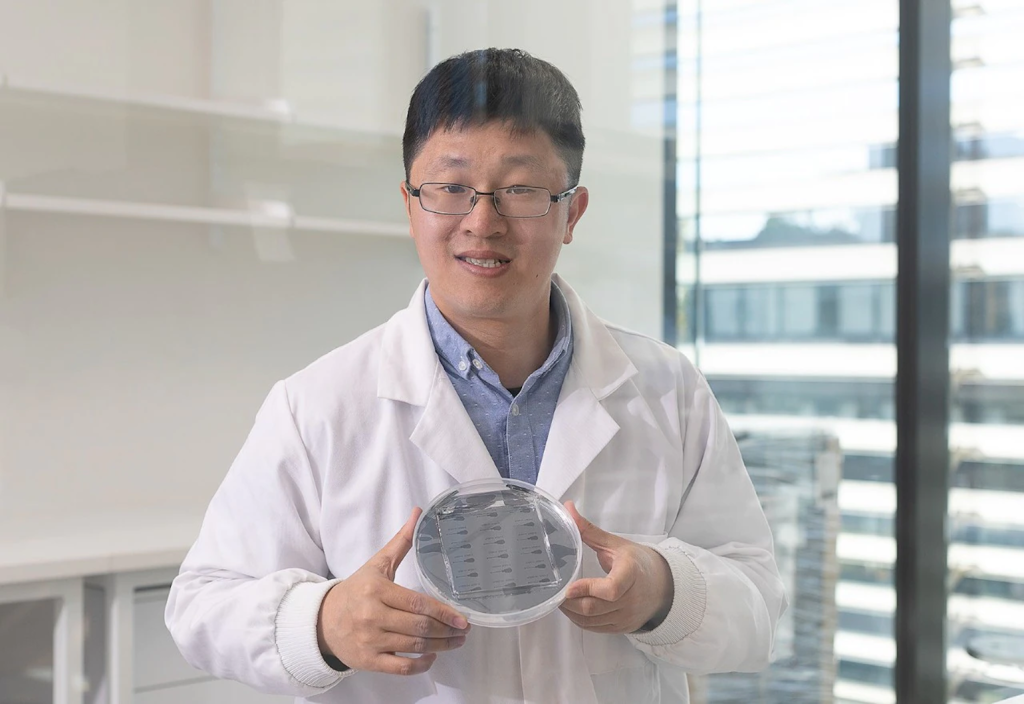A family history of cardiovascular disease is behind this engineer’s quest to develop a micro-device that detects changes in the blood ahead of a heart attack or stroke.
Cardiovascular disease is the world’s leading cause of death, responsible for an estimated 17.9 million fatalities each year. This is something Associate Professor Arnold Ju from the University of Sydney is determined to change.
Around 15 years ago, while Ju was undertaking a PhD in computational bioinformatics in the US, a near-tragedy changed the trajectory of his career.
“My father had a [non-fatal] heart attack when he was just 54,” says Ju. “Everything happened so quickly. There were no symptoms [and] there was nothing I could do about it. I started wondering if we could’ve known earlier.”

Shifting the focus of his PhD towards mechanobiology and cardiovascular biomechanics, Ju trained as a postdoctoral research fellow at Monash University and the Heart Research Institute to understand the mechanical actions of blood clotting, before a new opportunity arose at USyd’s newly launched School of Biomedical Engineering in 2019.
“They were looking for someone with both medical science and engineering training, so I felt like I was a perfect fit for the job,” he says.
Once Ju landed the role as an independent investigator, he was able to form his own research group – including Master’s student and Young Engineers Australia student leader Allan Sun, who was motivated to join the team after his grandfather suffered a stroke.
But soon thereafter, another difficult yet transformative event occurred – COVID-19.
“That was challenging because I needed to set up everything, purchase equipment and recruit people during budget freezes and lockdowns,” he says.
But through the hardships, Ju and his team were able to identify an opportunity to innovate.
“What COVID-19 taught us is that rapid antigen tests changed the way [diagnostic] testing can be delivered,” says Ju.
Passionate about developing new microtechnologies, the team devised an idea to develop a rapid blood-clotting test so people could assess their risk for heart attack or stroke anywhere, any time.
Three years on, Ju has become the first engineer to clinch a prestigious $8 million fellowship from the Snow Medical Research Foundation to develop mechanobiology-inspired microtechnologies.
“My career goal is to build a simple test to notify people at risk of developing a deadly blood clot so the tragedy of my dad’s story could be avoided,” says Ju.
Conceptualising a rapid, portable device
There are three layers that formed Ju’s idea of developing a blood clotting test similar to rapid antigen testing, with rapidity and ease of use key drivers in our increasingly on-demand society.
“As a future vision, you just load your sample, wait 30 minutes, and get a result on a test strip that could be a good indicator,” says Ju.
A miniaturised and portable testing microdevice also lends itself to accessibility, with traditional blood clotting tests in hospitals either bulky and/or located in core facilities that require authorisation and specialty to access.
“You want something quick and small that you can put in your pocket or carry without having to go to hospital,” adds Ju.
The urgency of a global pandemic also transformed the med-tech commercialisation process, allowing a product such as rapid antigen tests to appear in the market within a few years.
“It usually takes decades for biomedical innovations to be commercialised and [enter] the market,” says Ju. “But this live example shows there’s something very feasible in an engineering-led commercial model.”
Ju’s team also plans to repurpose the strengths of several other existing systems into a blood clotting test, including blood glucose finger-prick monitoring.
“Daily monitoring capacity is really important so you can keep tracking your health changes,” he says.
Benchtop systems such as cloud-based chemotherapy analysis readers are another source of inspiration. “These readers are connected to artificial intelligence clouds that can quickly produce reliable results,” says Ju.
The fundamental research phase
Now that the team has settled on an approach, the next question is: how are they going to leverage these med-tech success stories to tackle the blood-clotting business?
“Biologists and biochemists traditionally approach clotting testing and therapeutics by focusing on the signalling pathway of platelets, neutrophils and red blood cells, and the biomarkers they express,” says Ju. “But we think of disease differently.”
The cardiovascular system is different to the other nine major systems in the human body, with mechanical force playing a big role in its functionality.
“You need mechanical stimuli such as shear stress in the flow, cardiac contractility and blood pressure to maintain the cardiovascular system on an ongoing basis,” says Ju.
When the mechanical microenvironment changes, this impacts blood viscosity, shear stress, and vessel stiffness – but these mechanical factors have largely been overlooked.
“This is where the concept of mechanobiology starts to play in, and these things can be used to guide diagnosis or therapeutics,” says Ju.
“As an engineer, I’m going to develop lots of tools to look at tension, torque, compression, shear and pressure, and how the circulatory system responds to these forces.”
A game-changing device
In the next phases of the project, this knowledge will infuse the development of cutting-edge biomechanical nanotools and analysis that will form the basis of a clinical-grade microdevice to predict blood clot tendency. If all goes to plan, a benchtop prototype will be ready in three years’ time through the Snow Foundation funding.
“We need to strategically set up a few consumer groups, with the first studies focused on patients who have a critical need for rapid benchtop blood-clotting tests, such as patients in regional New South Wales with stroke or secondary stroke risk,” says Ju. “They’re far from Sydney and accessing a hospital with a big imaging centre is almost impossible.”
The next iteration will be geared towards people at risk of a cardiovascular event, including those with diabetes and obesity. “We know these people need primary prevention because they’re clotting tendencies are different,” he says.
However, the end goal is to develop a device to roll out across all consumer groups.
“Imagine you get chest pain at a friend’s party on the weekend and there are no doctors around,” says Ju.
Instead of umming and erring about what to do next, a readily accessible device could guide your decision.
“We’re hoping this bioengineering technology will help to reduce uncertainties and change people’s lives,” he says.
